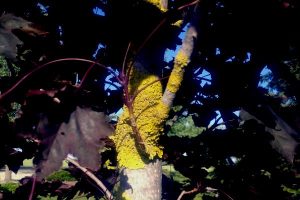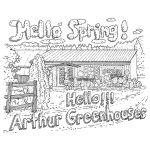What's the problem?
Several times a year we get the question from customers if the “green (or gray) stuff” on the bark of their tree(s) is harmful. If they already don’t have some branch with them, some answers on our questions lead us to lichen.
Lichens come in diverse shapes, sizes, colours and textures, but the lime green one as seen on the picture we see most of the time and to a lesser extent the gray variant. Some lichens appear superficially similar to moss, but lichen is not remotely related to moss or any other plant.
What is lichen?
A lichen, or lichenized fungus, is actually two organisms functioning as a single, stable unit. Lichens comprise a fungus living in a symbiotic relationship with an alga or cyanobacterium (or both in some instances). There are approx. about 15,000-17,000 species of lichen worldwide.
This fungus-alga combination allows lichens to exist in some of the harshest environments on the planet, from dry deserts to arctic tundra. Lichens can colonize nearly every imaginable type of surface, including rock, bark, soil and even glass. They are one of the first organisms to inhabit bare surfaces. Some lichens can even survive, unprotected, in space.
A lichen species commonly called reindeer lichen, is an important source of winter forage for most North American caribou populations.
What does lichen tell you?
Lichens rely on pollutant-free and undisturbed areas to flourish and most species are vulnerable to poor air quality. This means the protection of their habitat from development is a key part of sustaining their populations. Therefor lichens are excellent indicators of pollution. Lichens can absorb pollutants such as heavy metals, carbon and sulfur into their thalli. Extracting these pollutants gives an indication of the levels present in the atmosphere. This process is known as lichen biomonitoring.
So is lichen harmful for my trees?
No. Lichens are not feeding on your trees. Since lichens are able to make their own food with moisture and sunlight, they have no need to parasitize other plants. Lichens grow on the surface of your tree, and do not penetrate any tissue. Instead, they make use of the trunk or branches for support. In our cold climate they do not cause plant diseases.
Happy to have them around!





